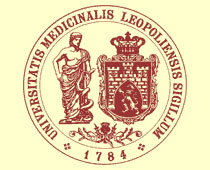17th European Congress of Clinical Microbiology and Infectious Diseases, – Munich, – 2007.
Abstract
Our study showed that peculiarities of clinical course and treatment among immunocompromised patients with end-stage renal disease strictly depend on the fact of HBV virulence. SVR(6 month duration Lamivudine therapy course) was achieved in 35% patients of this cohort. CHB reactivation was detected in 66% kidney recipients, even if surgery was performed after HBV disappearance. Severe course and mortality rate among Lamivudine treated patients, including those without confirmed virologic response occurred less frequently than among non treated patients.
Introduction and Purpose
The fact of HBV-infection among patients with ESRD is common and ranges 20-30% in some eastern European countries. Schemes and effectiveness of treatment of CHB in this cohort were not established.
The aim of our study was to evaluate course of CHB among patients with ESRD treated with Lamivudine in the hemodialysis department.
Methods
55 patients with HBV-related chronic liver disease (CLD) and ESRD were studied: 28 males and 15 females. Mean age – 41 years. Median ALT was 98 IU/L, all of them HBV-DNA+. 72% patients had wild-type, 28% had mutant HBV (HBeAg-negative). 37 patients took Lamivudine in creatinine clearance depending doses (10-50 mg/day) during 24 weeks. Serum HBV-DNA was detected using a PCR by “Amplisens HBV” (>1000 cp/ml). Lamivudine resistance was presumed by virological and biochemical worsening during treatment. HCV-, HDV-superinfection was excluded.
Results
At the end of treatment with Lamivudine 17 patients (46%) achieved HBV-DNA clearance. The decrease of ALT levels was notified in 52%. HBeAg seroconversion took place in 19% out of HBeAg-seropositive patients. Sustained virological response (SVR) within 12 months after treatment was revealed in 13 patients (35%). In 4 patients (24% of responders) HBV reactivation was noted. Kidney transplantation was performed in 12 patients with SVR. Within the first year after surgery HBV reactivation developed in 8 patients of this group (66%). Late CHB sequences were present among 18 patients without Lamivudine therapy: mild and moderate CLD – 28%, severe CLD and cirrhosis – 50%, fatal outcome in 22% of patients was due to chronic liver failure. Among nonresponders and/or in those with HBV reactivation the late sequences rate was accordingly 55%, 45%, 5%.
Conclusions
Peculiarities of clinical course and treatment among immunocompromised patients with ESRD strictly depend on the fact of HBV virulence. In this cohort SVR (6 month duration Lamivudine therapy course) reaches 35%. 66% kidney recipients underwent CHB reactivation even if surgery was performed after HBV disappearance. Severe course and mortality rate among Lamivudine treated patients, including those without confirmed virologic response occurred less frequently than among non treated patients.


